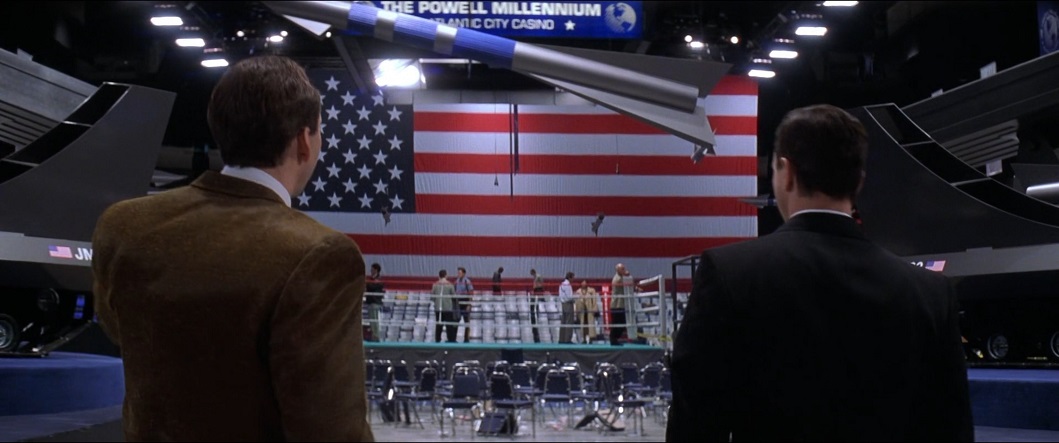
 Hello and welcome to the unofficial Brian De Palma website. Here is the latest news: |
|---|
E-mail
Geoffsongs@aol.com
-------------
Recent Headlines
a la Mod:
Listen to
Donaggio's full score
for Domino online
De Palma/Lehman
rapport at work
in Snakes
De Palma/Lehman
next novel is Terry
De Palma developing
Catch And Kill,
"a horror movie
based on real things
that have happened
in the news"
Supercut video
of De Palma's films
edited by Carl Rodrigue
Washington Post
review of Keesey book
-------------
Exclusive Passion
Interviews:
Brian De Palma
Karoline Herfurth
Leila Rozario
------------
------------
| « | July 2023 | » | ||||
| S | M | T | W | T | F | S |
| 1 | ||||||
| 2 | 3 | 4 | 5 | 6 | 7 | 8 |
| 9 | 10 | 11 | 12 | 13 | 14 | 15 |
| 16 | 17 | 18 | 19 | 20 | 21 | 22 |
| 23 | 24 | 25 | 26 | 27 | 28 | 29 |
| 30 | 31 | |||||
De Palma interviewed
in Paris 2002
De Palma discusses
The Black Dahlia 2006

Enthusiasms...
Alfred Hitchcock
The Master Of Suspense
Sergio Leone
and the Infield
Fly Rule
The Filmmaker Who
Came In From The Cold
Jim Emerson on
Greetings & Hi, Mom!
Scarface: Make Way
For The Bad Guy
Deborah Shelton
Official Web Site
Welcome to the
Offices of Death Records
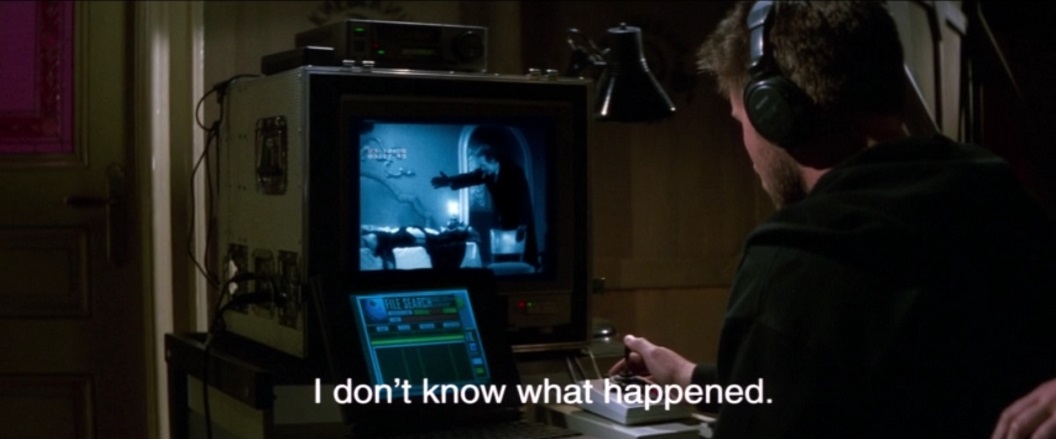
Why did Cruise, his first-time producing partner Paula Wagner, a multitude of screenwriters including Steven Zaillian, David Koepp & Robert Towne, and ultimately Brian De Palma, choose to destroy the very fabric of, what on the face of it, made Mission Impossible Mission Impossible? Because if you watch the film, and compare it with the TV series, they are without a doubt different beasts.Mind you, De Palma fools you into believing it might be a faithful adaptation with his first act, following the opening sequence whereby Phelps, Hunt and the IMF team use a range of theatrics. There are the infamous masks which would become a staple of the entire ensuing franchise, through to a con job using sets, performances and disguises, in order to get what they need from a target.
The sixth film, Fallout, pays homage to this in a similar sequence before its own credit sequence, but the difference here is that the audience are in on the performance. De Palma gives us what we expect from Mission Impossible: teamwork, staging and illusion.
The credits, which recall the original series too with a reworking of Lalo Schiffrin’s iconic theme and flashes of the mission to come, reinforce De Palma’s own illusion. The longer con is on the audience themselves.
Hence why, when De Palma by the end of the first act, kills almost the entirety of the IMF team—including seemingly Phelps himself—during a mission that everyone expects them to succeed in as part of the greater challenge, you are left reeling. This has to be part of the illusion of the narrative, surely? The IMF team can’t all be dead! The clue is in casting Cruise, whose shelf-life as a global cinematic superstar is perhaps one of the most durable in Hollywood history. Cruise is now in his fifth decade as a leading man. Just let that sink in a moment. By the mid-90’s, he was very much established thanks to films from Top Gun all the way through to A Few Good Men. Cruise’s name was above the poster. Cruise was Mission Impossible now. This early on, however, we just didn’t know it.
In short, Mission Impossible does not yet understand Ethan Hunt. It presents a very different character to the one Cruise eventually builds. Ethan, here, is the begrudging, vengeful spy betrayed, as far as he is concerned, by his own government after he is fitted up as a mole inside the IMF. The prey of the CIA, in the form of Henry Czerny’s delightfully officious Kittridge.
It kickstarts what would become some of Mission Impossible’s most popular tropes, second only perhaps to the mask disguises – the mole and the disavowal. There is not one Mission Impossible film which does not either contain a mole working within American intelligence or Ethan’s loyalty and fidelity being questioned. All of this began in Mission Impossible the moment Ethan Hunt loses his team, because even despite characters such as Ving Rhames’ Luther Stickell becoming a loyal ally over successive films, not one picture in this franchise has Ethan working, truly, as the cog inside a functional unit. Ethan is the machine.
De Palma’s film is, principally, a deconstruction of what made the 1960’s TV series work. That show was created at the height of the Cold War, with American and Soviet tensions providing a backdrop for the kind of television that would take the post-war austerity of the 1950’s and frame it in glossier, brighter contexts. Mission Impossible came from the same Desilu Productions stable as Star Trek, which premiered the year before and as MI portrayed a unit which using trickery and manipulation to overcome the enemy, Star Trek looked forward to a future in which the hostilities of the Cold War would be a thing of the past in a new American, even globally united, frontier. Both shows even share Star Trek breakout star Leonard Nimoy as part of their casts.
Whereas Star Trek permeated and managed a breakthrough toward the tail end of the darker 1970s in the American consciousness, Mission Impossible struggled to bring its brand of theatrical fancy back to a public who had moved on past the anxieties of the Cold War. Its return in the late 80’s, just a couple of years before the end of the century-defining conflict, didn’t last long.
By the time De Palma’s big screen adaptation was in production, the Cold War was over. The Russian bear had been put down and, suddenly, American espionage didn’t work in the same way. Despite nasty brush fire wars across the 90’s such as Iraq or Kosovo, Mission Impossible returned in the decade defined by Francis Fukuyama in his book ‘The End of History and the Last Man’ as the titular ‘end of history’.
Koepp and Towne’s eventual, credited script reflects this in Jim Phelps. When he is unmasked as the villainous architect of the NOC List theft, Phelps’ rationale is revealed in dialogue he offers freely to Ethan in outlining the mindset of the villain, Job, he is trying to convince Ethan exists:
You think about it Ethan, it was inevitable. No more Cold War. No more secrets you keep from yourself. Answer to no one but yourself. Then you wake up one morning and find out the President is running the country without your permission. The son of a bitch, how dare he? Then you realise, it’s over. You are an obsolete piece of hardware, not worth upgrading, you got a lousy marriage and sixty two grand a year.
There is quite a lot to unpick here. Principally the fact that Phelps’ turn to the dark side, the betrayal of his country and the American values we saw his same character embody in the 1960’s, at the height of the conflict against the Soviets, was fuelled by the lack of a defined ‘enemy’ for the intelligence community to fight. The destruction of his team also represents a pre-millennial fear that the enemy could be anywhere, even within. As opposed to the ideological Communist bloc close in our mind’s eye, but in literal terms far from our homeland.
Mission Impossible‘s revival reflects a world filled with shadowy, unknown forces who could strike anywhere, at any time, right at the heart of where we feel safe. It almost prefigures the rise of spontaneous terrorism. Ultimately, Mission Impossible is trying to understand its place in a new geopolitical landscape, as well as in the changing trends and emerging post-modern narratives of the 1990s.
Phelps in his soliloquy also mentions ‘hardware’ and this hints at the emergence of technological means in the post-Cold War paradigm that would replace the need for spies in the field doing the heavy lifting. This is in its infancy in Mission Impossible, which feels quite charming in watching Vanessa Redgrave’s playful arms dealer Max trying to upload floppy discs onto a computer system before the Channel Tunnel cuts off her connection. But the point remains that intelligence agencies now no longer need men like Phelps.
Conversely, De Palma also wonders if they need the IMF, hence why he happily takes down the team thanks to their insider, and leaves Ethan free and clear to create his own ramshackle group of mercenaries to help him clear his name – primarily in the standout CIA Langley set piece, which remains one of the most impressive, iconic and not to mention tense, sequences in action cinema of the last thirty years.
Mission Impossible does not sell Ethan, in this film, as any kind of James Bond proxy. Cruise’s charm is perfectly evident but Ethan is not a seductive, one-man killing machine, or indeed the death-defying nihilist he becomes post-MI3. Ethan here is a touch more enigmatic and distant, which befits the colder stylistics of De Palma’s approach to the material. His lens channels Hitchcock while imbuing the frame with a distinctly De Palma-level of paranoia.
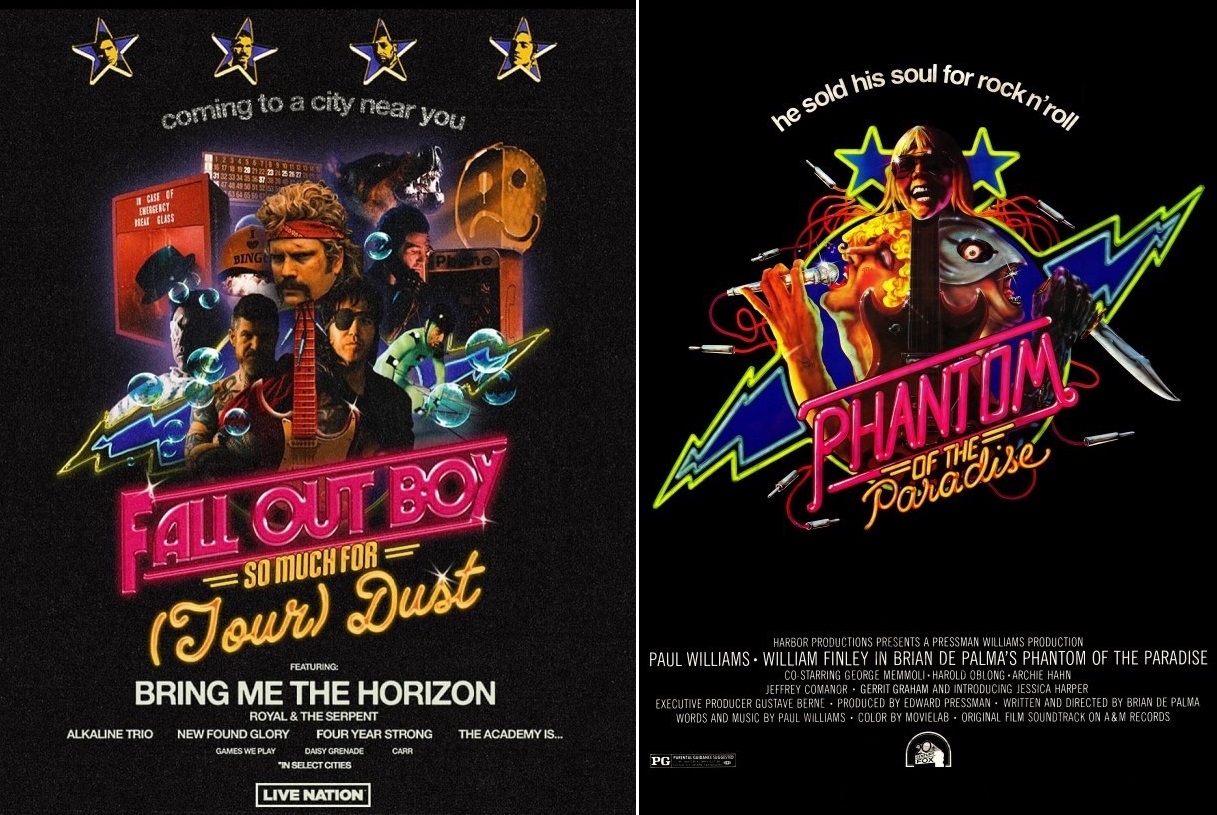
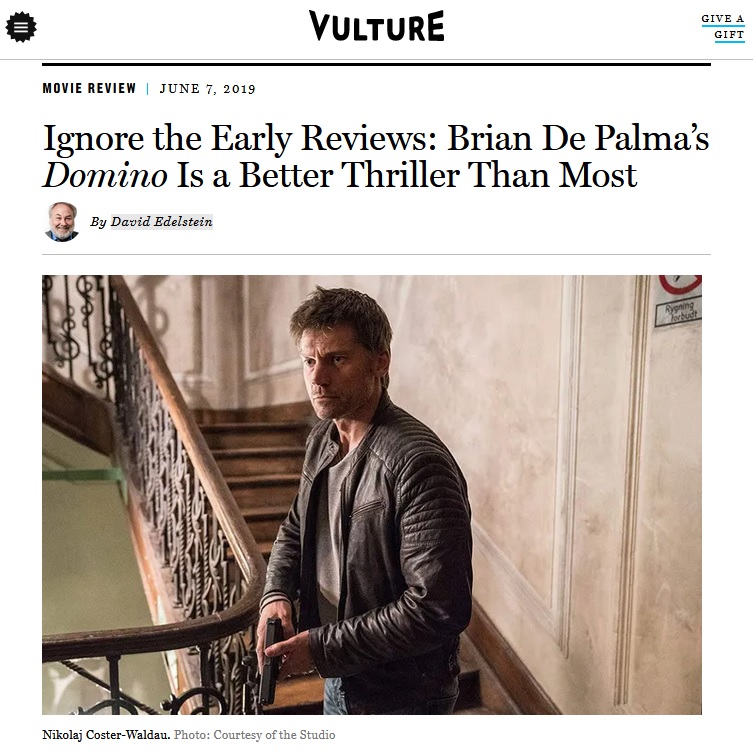
Underfunded, sketchily written, and heavily cut (maybe one reason the writing seems sketchy), Brian De Palma’s Domino still puts contemporary thrillers to shame. The story is standard-issue right-wing melodrama with some loop the loops: Two Danish cops, Christian (Nikolaj Coster-Waldau, fresh from Game of Thrones) and Alex (Carice van Houten, same) hunt a Libyan immigrant named Ezra Tarzi (Eriq Ebouaney) who killed Christian’s partner (who was also Alex’s illicit lover) — not fully realizing that Tarzi is being protected by the CIA, led by Guy Pearce’s Joe Martin. Why does the agency allow Tarzi to hack a bloody path through Europe? Because he can do (and is very talented at doing) what the CIA by law cannot: locating, torturing, and killing ISIS operatives in a quest to kill the sheikh who murdered his humanitarian father.The script is full of little digs at liberals (the sheikh was released from Guantánamo; Denmark is so fashionably leftist), but De Palma doesn’t seem interested in the politics. For him, Domino is a late-career exploration of ideas that have obsessed him for 50-odd years. One is the hypnotic pull of subjective camera footage. The ISIS terrorists use filmed violence to turn people on, at one point sending a young woman to document her murders on the red carpet of the Netherlands Film Festival (“Ending the lives of infidels is a great thing. Scaring the millions of others who see it live on TV is something even greater!”) and planning a massacre in a bullfight arena that will be shot by a hovering drone.
Most of all, De Palma proves that greatest suspense (and horror) come from helplessness, a sense of impotence. Christian sees his partner bleeding out and the suspect escaping over a slate roof and is torn between his dual duties, but De Palma doesn’t quicken the pace the way most directors would. Instead, time stretches out, gravity pulls harder, and the air seems to thicken, agonizingly. The showstopper climax has the stately, “Bolero”-like rhythm of the first sequence of Femme Fatale, while also recalling the nightmarishly protracted tragedies of The Fury and Blow Out and so many other De Palma films. The heroes have to work out complex spatial-temporal equations at lightning speed — but slowed down by factors of two, then four, then eight, until your heart feels like it will explode.
What has pissed off early audiences (and many critics) about Domino is that the payoffs fall short of the buildups. A swift kick in the groin is unintentionally comic. A major character dispatched too abruptly makes De Palma seem glib. I’d like to see his full cut someday. Meanwhile, you should ignore the terrible reviews. I’d like to think the crates of tomatoes that are a running motif and figure in the plot are a tacit acknowledgment that the Tomatometer doesn’t always tell the truth.

4K DUAL FORMAT LIMITED EDITION CONTENTS
- Limited edition packaging with reversible sleeve featuring original and newly commissioned artwork by Obviously Creative
- Double-sided fold-out poster featuring newly-commissioned artwork by Tom Ralston and Obviously Creative
- Seven double-sided, postcard-sized lobby card reproductions
- Illustrated collector’s booklet featuring new writing on the film by Barry Forshaw and original production notes
DISC ONE: FEATURE (4K ULTRA HD BLU-RAY)
- 4K Ultra HD Blu-ray (2160p) presentation in High Dynamic Range
- Original stereo, 5.1 DTS-HD Master Audio and DTS-X audio
- Optional English subtitles for the deaf and hard of hearing
- Brand new audio commentary by Matt Zoller Seitz, author of The Wes Anderson Collection and The Soprano Sessions
- Brand new audio commentary by Dr. Douglas Keesey, author of Brian De Palma’s Split-Screen: A Life in Film
DISC TWO: FEATURE AND EXTRAS (BLU-RAY)
- High Definition Blu-ray (1080p) presentation
- Original stereo and 5.1 DTS-HD Master Audio
- Optional English subtitles for the deaf and hard of hearing
- Brand new audio commentary by Matt Zoller Seitz
- Brand new audio commentary by Dr Douglas Keesey
- Carlito and the Judge, a brand new interview with Judge Edwin Torres, author of the novels Carlito’s Way and After Hours on which the screenplay for Carlito’s Way is based
- Cutting Carlito’s Way, a brand new interview with editors Bill Pankow and Kristina Boden
- De Palma’s Way, a brand new appreciation by film critic David Edelstein
- All the Stitches in the World: The Locations of Carlito’s Way, a brand new look at the New York locations of Carlito’s Way and how they look today
- De Palma on Carlito’s Way, an archival interview with director Brian De Palma
- The Making of Carlito’s Way, an archival documentary on the making of the film, produced for the original DVD release
- Original promotional featurette
- Theatrical teaser and trailer
- Image gallery
- Deleted Scenes
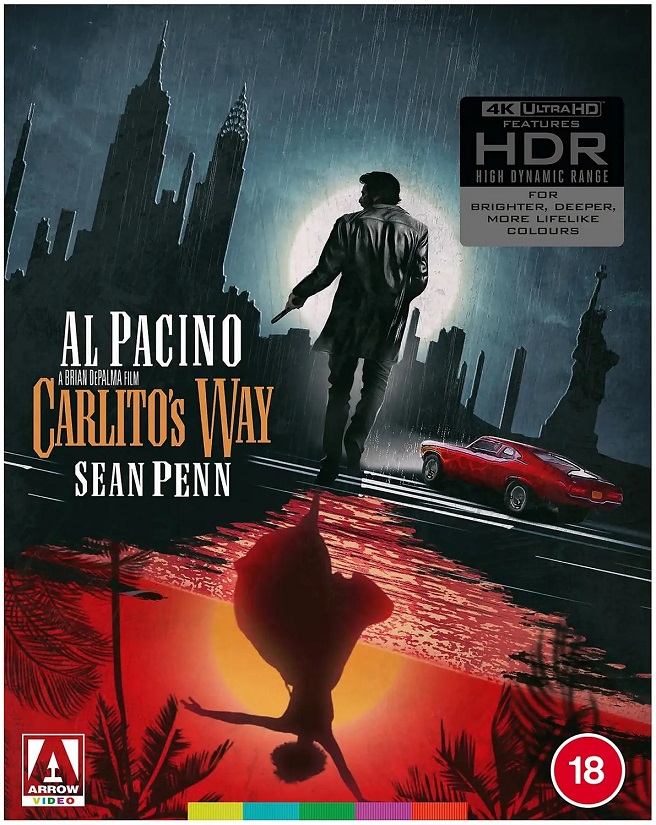
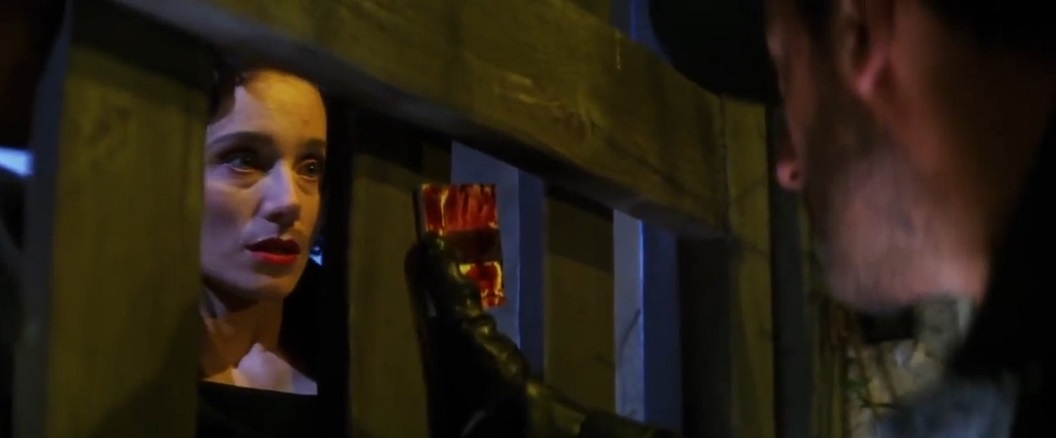
Over the last three decades, Cruise has become so indelibly linked with the Mission: Impossible franchise that it’s easy to forget what an unlikely project this actually was for him. It’s adapted from the CBS TV series that ran from 1966 to 1973. The whole point of TV’s Mission: Impossible was the team. It was an ensemble drama focused on a secret government espionage group. From the second series onward, the sleek, silver-haired Peter Graves was the star but Martin Landau, Barbara Bain, Greg Morris and Peter Lupus also had major roles.In 1993, Paramount needed to do something dramatic to hold on to Cruise. After his success in the legal thriller The Firm (1993), he was already becoming Hollywood’s most bankable star. As Variety reported at the time, studio execs began desperately “scouring their properties to find a killer, franchise-type project for Cruise”. Mission: Impossible was what they came up with as bait for their prize asset. This was a period when other stars were also appearing in movies inspired by small-screen dramas. Harrison Ford was in The Fugitive (1993) and Mel Gibson played the lead in Maverick (1994).
Cruise had watched and liked Mission: Impossible as a kid. Nonetheless, he didn’t seem a natural fit for the big screen spin-off. He was the brash, toothsome boy wonder of Hollywood, not the type to play a hard-bitten spy in a murky and cerebral drama involving clandestine US government operations in Europe.
Brian De Palma was brought on board as director after Cruise met him through Spielberg. The actor went home after having dinner with the two directors and binge-watched almost all of De Palma’s films in a single sitting – and then offered him the job.
On one level, it was an astute decision. The award-winning filmmaker behind The Untouchables, (1987) Casualties of War (1989) and Carlito’s Way (1993) was a strong-willed auteur who wasn’t going to worry about upsetting the fans of the original series. The downside was that he was too big a personality simply to work as a hired hand.
There was something wanton and cruel about the way almost all the supporting actors in the Impossible Missions Force (IMF) team are dispatched so early in the movie.
“I said the first thing we have to do is kill off the whole team,” De Palma later observed of his scorched earth policy toward the other spies in the story.
Alfred Hitchcock famously had Janet Leigh stabbed to death in the shower around 45 minutes into Psycho (1960) but De Palma gets rid of Emilio Estevez, Kristin Scott Thomas and Ingeborga Dapkūnaite far more quickly. In its opening scenes, their characters all register strongly. They’re shown working together in a mission in Ukraine and then being debriefed by their boss Jim Phelps (Jon Voight) as they prepare for their next assignment in Prague. As spies go, they’re likeable, resourceful and attractive but that doesn’t stop De Palma culling them in ruthless fashion. One is impaled head-first on the spokes of a malfunctioning lift. Another is stabbed to death. They die very operatic deaths, clearing the decks so that what starts as a multi-character movie can turn into a Cruise vehicle.
Those associated with the TV series were appalled. In interviews, Graves expressed his dismay that mission leader Jim Phelps, whom he had played in staunchly heroic fashion, was now being portrayed in such a verminous light by Voight .“I am sorry they [the producers] chose to call him Phelps,” he complained, suggesting a different name would have been more appropriate. Graves appeared to think that Voight’s Phelps had nothing to do with the man he had played. An alternative reading is that after all those years working in the shadows for the US government and being paid so poorly, Phelps had simply turned rotten.
His co-star Landau was equally upset at the decision to destroy the Mission Impossible team. De Palma didn’t care. He had signed up for Mission: Impossible for one very specific reason. “I was determined to make a huge hit,” he admitted to fellow filmmakers Noah Baumbach and Jake [Paltrow] when they made their 2015 documentary about him. De Palma knew that for this to happen, Cruise had to be in as many scenes as possible.
One of the enduring fascinations of Mission: Impossible is the attrition between the star and the director. There are several accounts that claim they didn’t get on at all – although it’s unclear why they fell out. Some claimed that Cruise balked at doing the stunt in which Ethan was almost drowned after an aquarium in a restaurant explodes.
It didn’t help that the script was being reworked even as shooting was continuing. A small army of writers was involved, from David Koepp, whose credits range from Jurassic Park to Indiana Jones and the Dial of Destiny, Steven Zaillian, then best known for Schindler’s List, and Chinatown’s Robert Towne.
In spite of the best efforts of these scribes, the plotting is very creaky. It is there simply to link the action set-pieces at the heart of the movie. There are non-sequiturs and baffling moments in which Ethan, a master of disguise, puts on or rips off masks and changes his identity. Everyone is in pursuit of a floppy disk containing the so-called NOC list of covert secret agents.
For all its contrivances, this remains a full-blooded De Palma movie, bursting with his usual directorial flourishes. From the meticulously choreographed interrogation scene that opens the movie to the continual sleights of hand and trompe l’oeil effects, slow motion explosions, scenes in which dreams and reality seem to blur and even the ruby red lipstick worn by the doomed Scott Thomas that matches the blood from her stab wound, make the film very recognisably the work of its director. Miraculously, it also succeeds as a Cruise action picture. Critics picked up on the film’s many references to Hitchcock. Sight and Sound called it “an explosion of pleasures”, comparing it to North by Northwest and praised De Palma for making the story match the relentless tempo of the famous Mission Impossible theme song by Lalo Schifrin. It was re-recorded for the film by Adam Clayton and Larry Mullen of U2.
Nor was it a case of Cruise demanding more spectacle while the highbrow director fought for a greater emphasis on character development. De Palma insisted in a 1998 interview with Premiere magazine that he was the one who fought against fierce opposition for the wonderfully overblown, Wagnerian helicopter, train and tunnel chase that ends the movie.
Mission Impossible is an exercise in pastiche but it is glorious pastiche. The bravura sequence in which Cruise’s Ethan dangles spider-style from CIA headquarters in Langley, Virginia, is inspired by the heist in the French thriller Rififi (1955) in which the thieves chisel through the ceiling of the apartment they’re robbing. The De Palma touch, though, is the close-up on the drop of sweat that Cruise catches in his hand, when if it hits the floor, the alarms will go off.
“One of these is enough,” an exhausted De Palma told Cruise when the actor asked him to make a sequel to Mission: Impossible. After he bowed out, John Woo, JJ Abrams, Brad Bird and Chris McQuarrie went on to direct further instalments of the franchise.
The tone of the movies has changed dramatically since 1996. The redoubtable Ving Rhames is still there as Ethan’s trusted sidekick Luther, but most of the other actors are long gone. The films have become lighter and yet more self-parodic. The stunts are as astounding as ever but what you don’t find is the sheer cinematic chutzpah that De Palma brought to the franchise. No one is comparing them to Hitchcock movies anymore.
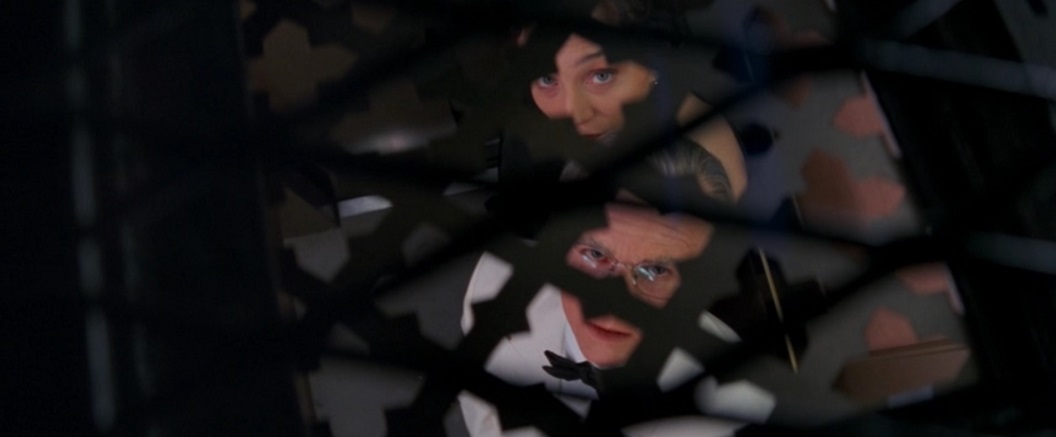
The songs on Rise of the Rebel Angels go in so many directions stylistically. There’s rock, power-pop, glam, folk, piano ballads, punkier things. Where do you take musical influence from?There’s so much. I love the Pretenders; Chrissie Hynde is a huge hero. Jeff Buckley. Oasis. The Beatles, obviously. Frank Black and the Pixies. Tom Waits. Mark Lanegan. The Replacements. Prince. I also love stuff like System of a Down – I’m really a huge fan of Daron Malakian’s guitar playing and songwriting.
And Julee Cruise – those records where Angelo Badalamenti did the music and David Lynch did the words: I’m a massive fan of those, especially the first one, [1989’s] Floating Into the Night. And of course I love all the ’70s glam stuff, like T. Rex, Bowie, Mott the Hoople. Sweet, Slade… All of that.
You play a variety of instruments on the record. But is guitar your go-to?
It’s definitely the instrument I feel most fluent on. I love drums and I love piano, but guitar comes easiest to me and it’s the one I’ve been playing the longest.
Is it your main songwriting tool?
Usually. Sometimes I’ll write on piano, or a synth sound will trigger something in me. Every once in a while I’ll write something in my head, like on a plane flight or when I’m out walking. But usually it’s from messing around on an acoustic guitar and finding some chords or a melody that feels good.
That’s what happened with, for instance, “Wrong Dove,” which is the second-to-last song on the album. I was just goofing around on the couch with a 12-string acoustic. And in retrospect, I can see that I’d been listening to a lot of [musician and producer] Alex G. I can hear that in it. It has that same kind of high falsetto vocal.
There’s also some great lead guitar work on the record, in particular on songs like “Everywhere All the Time,” and the first single, “Let It Rust,” which have very expressive slide work. And the closing track, “Live to Ride,” features a really over-the-top multitracked lead.
“Everywhere All the Time,” the lead in that is the melody from the theme from Body Double, the Brian De Palma film, which I’ve always loved. There’s always little musical Easter eggs that I’m intentionally or unintentionally leaving in. And I just thought that sounded cool in the song.
And something like “Live to Ride” – sometimes I get tired of having a pop tune with, like, a really tasteful solo. So on that one I was thinking more like Steve Vai, like, “How can I like ruin this song?” [laughs] And don’t get me wrong – I love Steve Vai. That’s not disparagement. I just thought that most people wouldn’t take a tune like that and put like a shredding solo on it. To me that felt sort of vulgar and inappropriate, which is why I wanted to do it. That one was done with the Schecter with the Sustainiac and the Floyd Rose, and I double- and triple-tracked it in places.
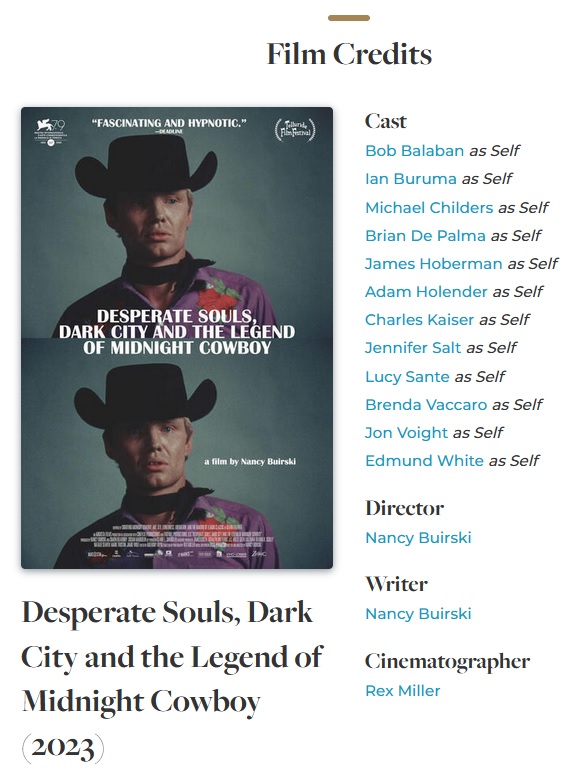
Wrapped loosely in the packaging of a documentary, "Desperate Souls, Dark City and the Legend of the Midnight Cowboy," is written and directed by Nancy Buirski. It features Jon Voight, Bob Balaban, Brian de Palma, Charles Kaiser, Lucy Sante, Brenda Vaccaro, the voice of John Schlesinger, and many others who either were in "Midnight Cowboy," involved in its production, or were admirers of the film.When the documentary opens with a closeup of Jon Voight, recalling an existential crisis by director John Schlesinger after the completion of "Midnight Cowboy," the film almost implicitly states that it will be about the creation of that film. Yet, "Desperate Souls" only lightly touches on the creation of "Cowboy." Instead, this film spends most of its time investigating the era during which it was made. "Midnight Cowboy" lived at the nexus of a war, the civil rights movement, and the early beginnings of the gay rights movement.
A movie, good, bad or indifferent, is always “about” something. But some movies are about more things than others, and as you watch “Desperate Souls, Dark City and the Legend of Midnight Cowboy,” Nancy Buirski’s rapt, incisive, and beautifully exploratory making-of-a-movie documentary, what comes into focus is that “Midnight Cowboy” was about so many things that audiences could sink into the film as if it were a piece of their own lives.The movie was about loneliness. It was about dreams, sunny yet broken. It was about gay male sexuality and the shock of really seeing it, for the first time, in a major motion picture. It was about the crush and alienation of New York City: the godless concrete carnival wasteland, which had never been captured onscreen with the telephoto authenticity it had here. The movie was also about the larger sexual revolution — what the scuzziness of “free love” really looked like, and the overlap between the homoerotic and hetero gaze. It was about money and poverty and class and how they could tear your soul apart. It was about how the war in Vietnam was tearing the soul of America apart. It was about a new kind of acting, built on the realism of Brando, that also went beyond it.
And it was about love. Jon Voight’s Joe Buck, that rangy Texas good ol’ boy with his fringed buckskin jacket and his jutting-front-teeth grin and his sexy bright naïveté, and Dustin Hoffman’s Ratso Rizzo, sweaty and unshaven, long hair greased back, hobbling through the streets, hording his change in a shoe with a hole in it and no sock — these two had nothing in common except that they were losers, hanging by a thread, and only after a while did they realize that they had nothing in the world but each other.
The risky, offhand greatness of “Midnight Cowboy” is that the movie, while it knew it was about a lot of these things, also didn’t know it was about a lot of these things. More, perhaps, than any other formative New Hollywood landmark (“Bonnie and Clyde,” “The Graduate,” “Easy Rider”), the film channeled the world around it. “Desperate Souls, Dark City” tells the story of how “Midnight Cowboy” got made, and how the people who made it — the director John Schlesinger, the screenwriter Waldo Salt, Jon Voight and Dustin Hoffman, and James Leo Herlily, who wrote the 1965 novel on which the film was based — took the essence of who they were and poured it into a personal vision of what we were seeing onscreen.
As a documentary filmmaker, Nancy Buirski (“By Sidney Lumet”) comes at you from a heady impressionistic angle. For all its tasty anecdotes, and there are lots of them, “Desperate Souls” is less concerned with production war stories, with the everyday nuts and bolts of how “Midnight Cowboy” got made (we see the famous scene in which Ratso bangs on a car and shouts “I’m walkin’ heah,” but don’t get the usual story about shooting the scene), than with the emotional metaphysics of how a movie about a blinkered hustler and a homeless loser came to embody what Hollywood was becoming: not a dream factory but a truth factory, an eerie moving mirror of who we were.

Have you been discouraged at all by the negative reaction “The Idol” has received from some quarters? Or was that something you expected?No, no, that very much expected.
I keep waiting for it to shift, like “Dressed to Kill,” the Brian De Palma film (who also directed “Scarface” and “Carrie”), which is very slow in the first half and then suddenly becomes fast-paced and exciting.
Brian De Palma is a huge inspiration for all this, and of course [Paul] Verhoeven [“Basic Instinct,” “Total Recall,” “RoboCop”]. But look, we’re playing with genres with this show, we’re doing exactly what we wanted to do. And none of this is a surprise. I’m excited for everyone to watch the rest of the show.
Here’s a related question: Over the past few years you keep doing all these things to make yourself ugly, between the busted nose and the blood in your mouth for the “After Hours” look and the bloated face in the later phases of it —
And the old man face! [for the “Dawn FM” cover].
And the creepy mask at the beginning of the concerts —
Yes, that’s like the Phantom [of the Opera], gladiator inspired, of course, and Dr. Doom and then [the late, masked rapper-producer] MF Doom.
… and Tedros’ rat tail. What is it in you that makes you want to make yourself ugly?
This is just make-believe. It’s make-believe!
I guess you did the sexed-up and debauched image before? Not being really a sex symbol but —
I don’t think I’ve ever been a sex symbol.
You don’t think so?
No, definitely not. (Laughing)
OK fine. Is there anything I haven’t asked about that you’d like to say?
No, I’m just enjoying this tour and I’m excited to challenge myself and see how we can how we can change the game with the concert films.
“Films”? Are there plans to document the next two phases of the tour?
(Long pause) We’re shooting the inception of something now, which… which I feel like I haven’t been able to do before. So whatever we’re doing now, we’re capturing the genesis of it. So it’ll be an interesting documentary. Is that too vague?
Not for you!
Friday, March 20, 2020'DRESSED TO KILL' - THE WEEKND'S CURRENT OBSESSION
ALSO, 'TROUBLE EVERY DAY', 'THE COLOR OF MONEY', 'DER FAN'
CR Men's Tiana Reid posted a story today about The Weeknd (aka Abel Tesfaye), which mentions a few films the pop star is currently obsessed with:In 2019, Tesfaye went back to his early days, playing the Trilogy-era version of himself in the Safdie brothers’ film Uncut Gems. “I’ve been following the Safdies for years,” he says, a committed cinephile whose current obsessions include Claire Denis’ carnal thriller Trouble Every Day (2001), Brian De Palma’s neo-noir slasher Dressed to Kill (1980), Eckhart Schmidt’s West German, ’80s horror flick Der Fan, and Martin Scorsese’s The Color of Money (1986).On the big screen, he plays it douchey, “a kind of almost satirical version of myself,” he says. His fictitious double refuses to sing unless he’s in black light. He performs “The Morning” and does lines with a white girl (Julia Fox) who comments on his erection. “He’s going to be major—even though he’s from Canada,” Julia says earlier in the film. The line is played for laughs.
That “even though” is a bigger deal than it seems. Tesfaye was born to Ethiopian immigrant parents and raised in Scarborough, a region east of downtown Toronto, before he dropped out of high school, moving out to Parkdale in Toronto’s west side. For many of the young, black, brown, and poor people in Canada’s most-populous city, Toronto lacks industry connections of all kinds, affordable housing, and creative infrastructures, especially when compared to cities in the United States. In response to his upbringing, along with La Mar Taylor, Ahmed Ismail, and Joachim Johnson, the Weeknd now runs the nonprofit HXOUSE, a “Toronto-based, globally focused think-center” that works with young artists of many disciplines. Global capital obviously floods Toronto through real estate, technology, and development, but in an exorbitantly expensive rental housing market, the lofts of “Lost Music” are unaffordable. A condo company in Tesfaye’s old neighborhood of Parkdale, a 14-story new development, is eerily called XO Condos. Five-hundred-square-foot boxes, currently unbuilt, are being sold for upwards of $600,000 dollars. XO is, of course, also the name of the Weeknd’s record label, which includes Canadian hip hop acts Nav, Belly, and 88Glam.
Today, ostensibly, he’s made it. "I feel confident with where I’m taking this [new] record,” he reveals. “There’s also a very committed vision and character being portrayed and I get to explore a different side of me that my fans have never seen.” He says that the first drop, the anti-romance song called “Heartless,” follows where My Dear Melancholy left off. “It was the first song I wrote after that album, so it felt fitting for me to put it out,” he says. “I play a character in the video who becomes compromised and then overcompensates with all the sins that Vegas provides. It’s a great introduction to the next chapter of my life.” In the music video for “Heartless,” set in Las Vegas, this new character, with his Lionel Richie mustache, Herbie Hancock glasses, and a slappy grin, was in fact inspired by Sammy Davis, Jr. in the 1973 film Poor Devil. In one scene, he licks a frog. It’s an all-knowing corniness that can be a bit of a one-note gimmick, its arc to be determined by the forthcoming album.
In the final scene of the video for “Blinding Lights,” which premiered in January, this new jittery nouveau-riche character stares into the camera but also beyond it, blood between his teeth. The look is a mix of Joker and Béatrice Dalle in that aforementioned Claire Denis film he loves so much, Trouble Every Day. After a journey through a hall of mirrors, a good high, a good ass-whooping, it’s hard to tell whether he’s laughing or crying. There’s something funny and something tragic in that ambivalence. This sense that we play characters both louche and garish feels like where we are at the turn of this decade, after years when it seemed no one had a self.